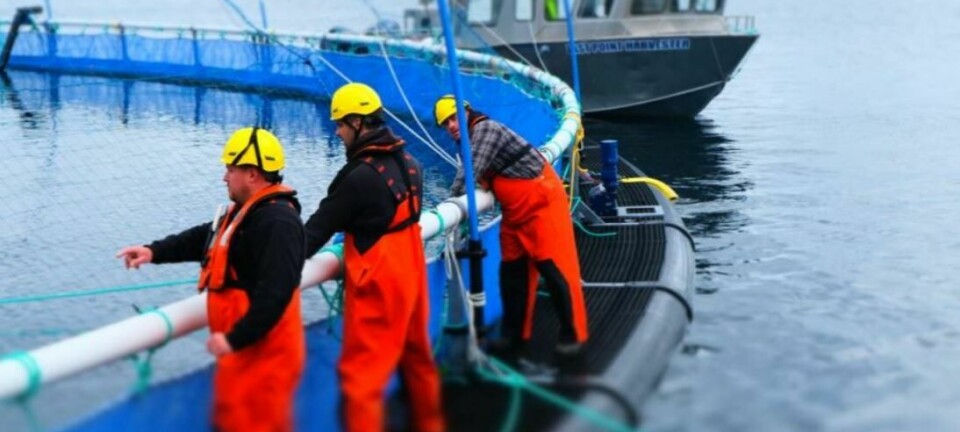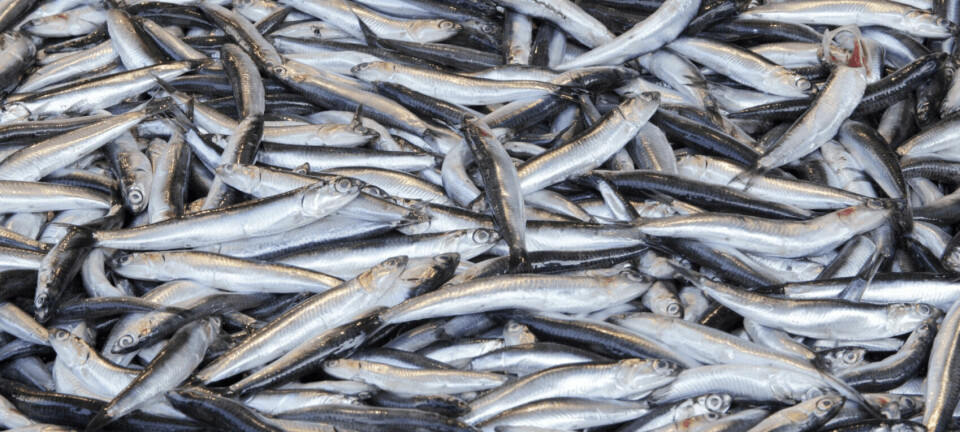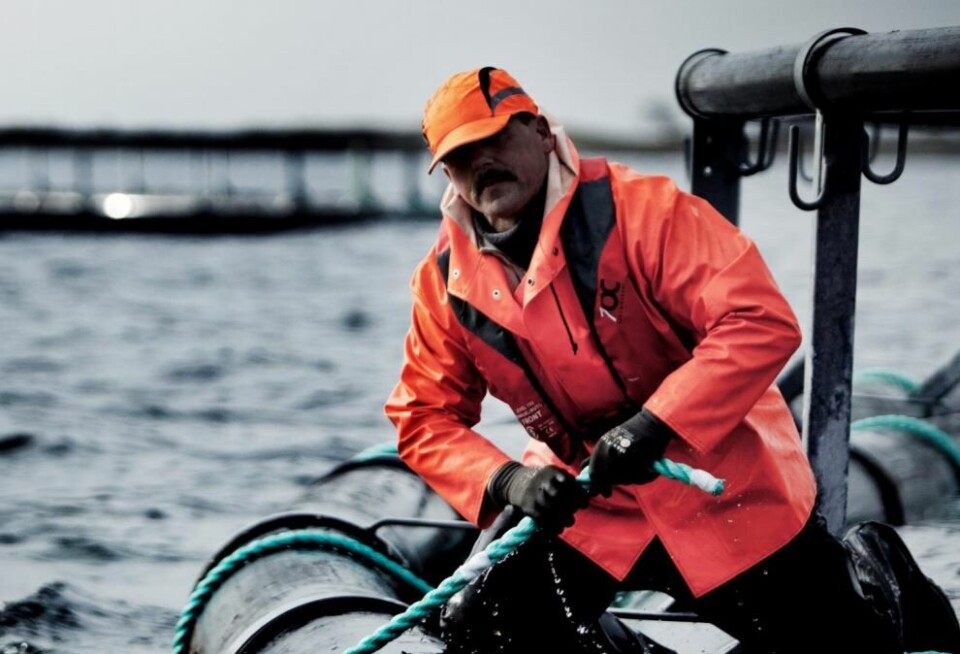
Record year for Grieg Seafood
Operating profit hits 30-year high despite troubles in last quarter of 2022
Norway and Canada salmon farmer Grieg Seafood made a record operating profit of NOK 1.739 billion (£142 million) last year and produced the highest ever harvest from its current farming regions.
The results, in a year defined by high salmon prices, were achieved despite a weaker fourth quarter than the same period in 2021.
Grieg harvested 84,697 gutted weight tonnes of salmon last year, up from 75,601 gwt in 2021, it said in a report for the fourth quarter of 2022. The company’s two Norwegian production regions, Rogaland and Finnmark, both had record high harvests and made record operating profit.
In British Columbia, Grieg harvested 20,286 gwt last year (2021: 14,448 gwt) and made an operating profit of NOK 270.4 m (150.2 m). Operating profit per kilo in BC was NOK 13.3 (approximately Canadian $1.75 per kilo), up from NOK 10.4 per kilo in 2021.
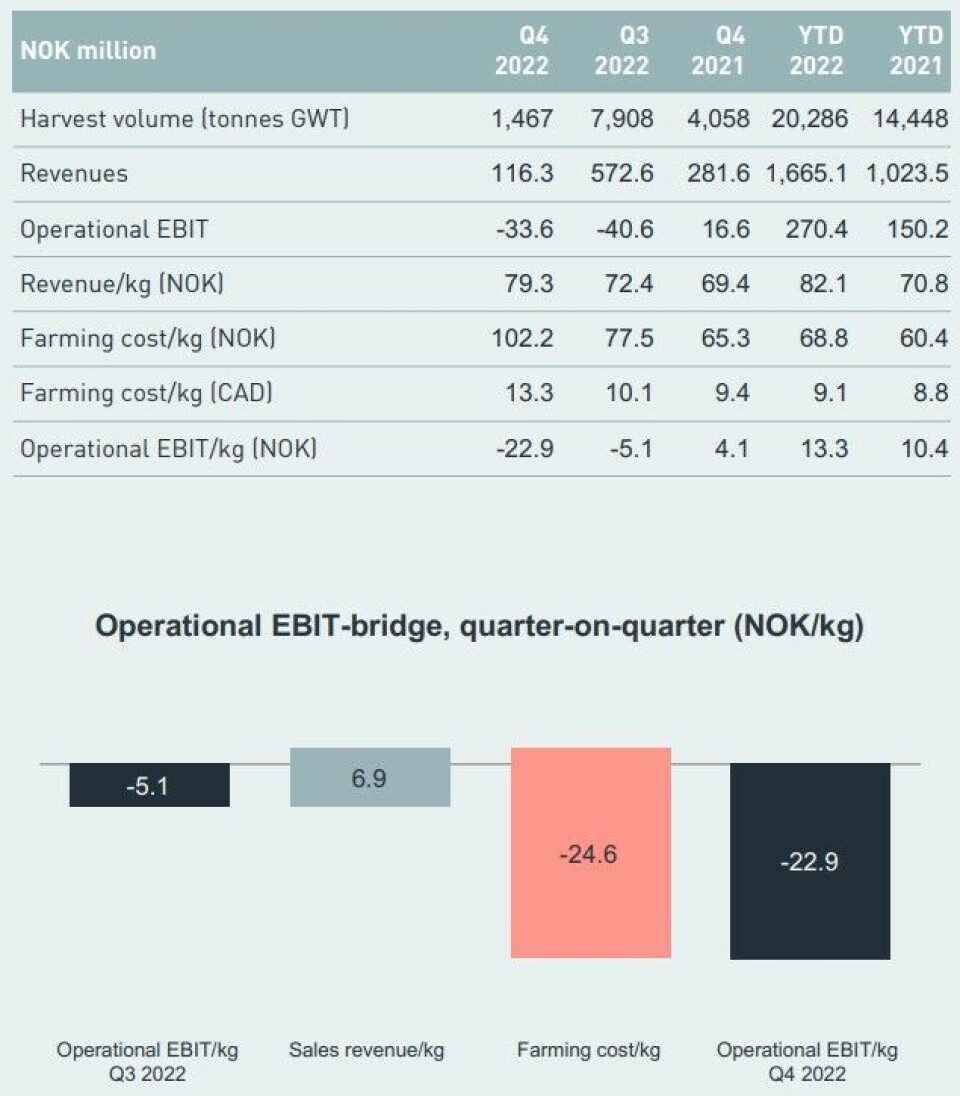
Building biomass
The company is focused on building biomass in BC and won’t harvest any fish in the current quarter. It expects to harvest 5,300 gwt in Rogaland and 5,700 gwt in Finnmark in Q1.
Grieg is guiding for a harvest volume of 82,000 gwt in 2023, of which 57,000 gwt will come from Norway and 25,000 gwt from Canada.
The company expects to harvest 20,000 gwt in BC and a further 5,000 gwt in Newfoundland, where it has new farms in Placentia Bay. Fish were stocked in Newfoundland last year and Grieg will begin to harvest them in Q4 2023.
550-gram smolts
Operational EBIT (operating profit) per kilo in Q4 2022 for Rogaland ended at NOK 13.8 (11.5) and was positively impacted by a superior share of 91% compared to 85% in the corresponding period last year, offset by a negative contribution from contracts and low average harvest weight. The 12-month rolling survival rate remained strong and came to 92% at the end of the quarter. The average weight of smolt transferred to sea for the year was 550 grams, in line with the region’s post-smolt strategy.
In Finnmark, harvest volume for the quarter was 3,000 gwt above guidance, mainly due to early harvest of fish impacted by the parasite Spironucleus salmonicida (Spiro).
Operational EBIT/kg for the quarter ended at NOK 12.5 (17.0), reflecting decent price achievement, but a cost level impacted by Spiro.
The source of the parasite is believed to be the water intake to the freshwater facility. A NOK 70 m investment in UV (ultra violet) treatment is to be made at the facility to mitigate the Spiro challenge. Spiro also impacted the 12-month rolling survival rate, which came to 91% at the end of the quarter.
Strong BC performance
Grieg said that overall, BC had a strong performance in 2022. The operational EBIT/kg in Q4 of NOK -22.9 (4.1), however, was a result of very low harvest volumes, as the region prioritised biomass growth during the quarter. The cost was also impacted by the discontinuance of operations in the Sechelt area. Seawater production in British Columbia was good during the quarter, with a stable 12-month rolling survival rate of 91%.
In Newfoundland, Grieg reported that the seawater production is according to plan, with high survival and no sea lice issues. The year-end biomass of Newfoundland was 2,600 tonnes, with an average weight of 1.3 kg. Freshwater production has also been good, and the company aims to transfer smolt to sea again during late spring or summer of 2023.
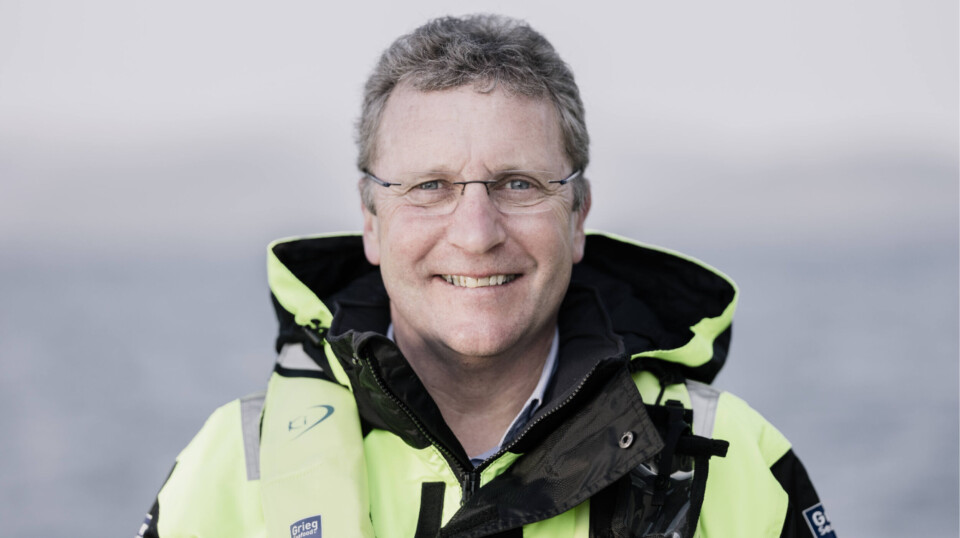
Mitigating measures
Grieg chief executive Andreas Kvame said: “2022 was a record-breaking year for Grieg Seafood. In our 30 year long history, we have never achieved a higher operational EBIT, seen a stronger market, or harvested higher volumes in our existing farming regions.”
He added: “During the fourth quarter, we experienced challenging biological conditions in our Norwegian regions, particularly in Finnmark. Mitigating measures have been taken and the underlying biology is improving. In BC, production was good during the quarter with stable survival. The Newfoundland region is developing according to plan.
“As a result of inflation and the biological events of last year, which impacted cost levels negatively, we are launching an improvement program to review all aspects of our operations and identify areas where we can increase profitability across our business.”
